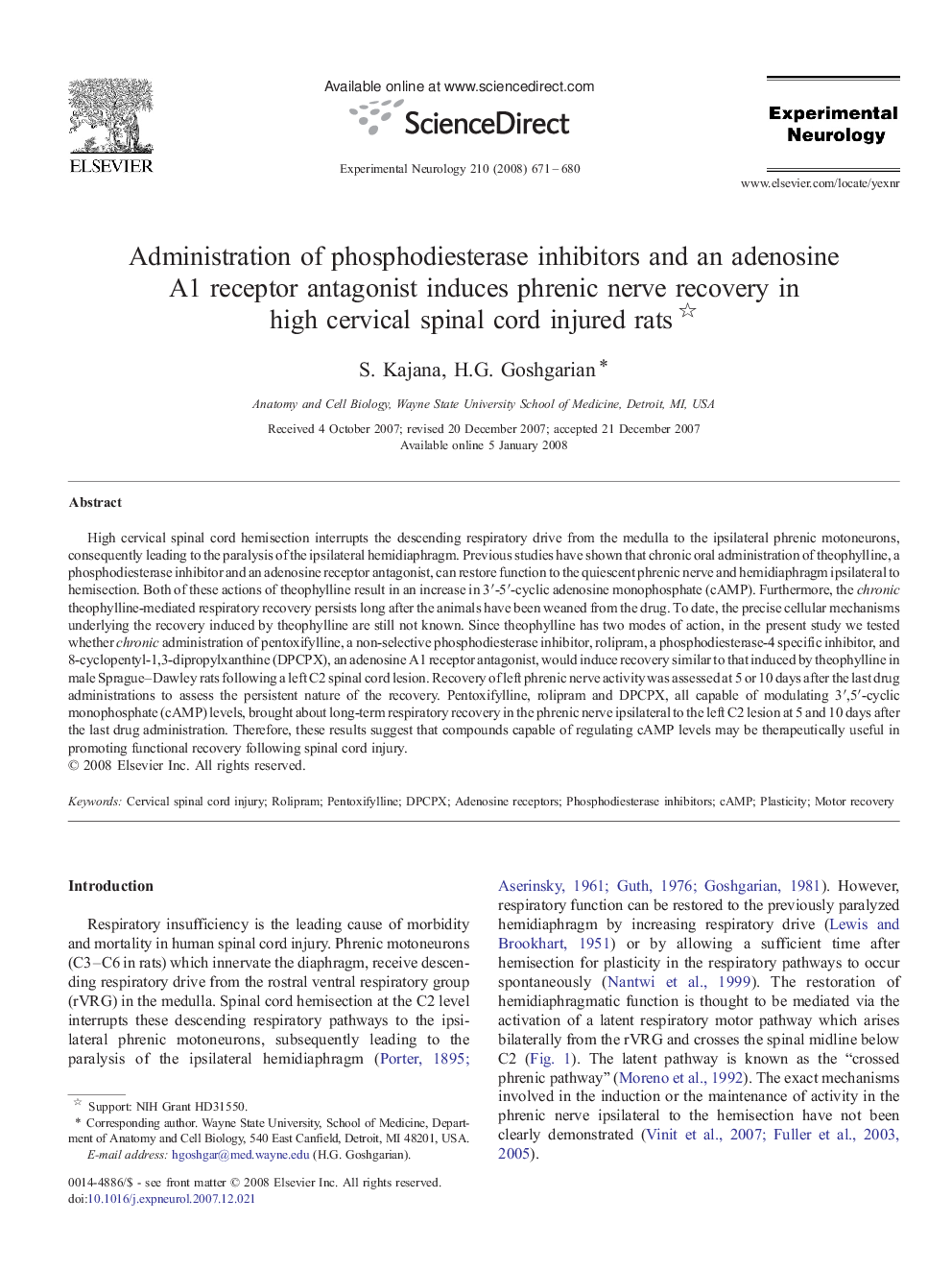| کد مقاله | کد نشریه | سال انتشار | مقاله انگلیسی | نسخه تمام متن |
|---|---|---|---|---|
| 3056792 | 1580196 | 2008 | 10 صفحه PDF | دانلود رایگان |

High cervical spinal cord hemisection interrupts the descending respiratory drive from the medulla to the ipsilateral phrenic motoneurons, consequently leading to the paralysis of the ipsilateral hemidiaphragm. Previous studies have shown that chronic oral administration of theophylline, a phosphodiesterase inhibitor and an adenosine receptor antagonist, can restore function to the quiescent phrenic nerve and hemidiaphragm ipsilateral to hemisection. Both of these actions of theophylline result in an increase in 3′-5′-cyclic adenosine monophosphate (cAMP). Furthermore, the chronic theophylline-mediated respiratory recovery persists long after the animals have been weaned from the drug. To date, the precise cellular mechanisms underlying the recovery induced by theophylline are still not known. Since theophylline has two modes of action, in the present study we tested whether chronic administration of pentoxifylline, a non-selective phosphodiesterase inhibitor, rolipram, a phosphodiesterase-4 specific inhibitor, and 8-cyclopentyl-1,3-dipropylxanthine (DPCPX), an adenosine A1 receptor antagonist, would induce recovery similar to that induced by theophylline in male Sprague–Dawley rats following a left C2 spinal cord lesion. Recovery of left phrenic nerve activity was assessed at 5 or 10 days after the last drug administrations to assess the persistent nature of the recovery. Pentoxifylline, rolipram and DPCPX, all capable of modulating 3′,5′-cyclic monophosphate (cAMP) levels, brought about long-term respiratory recovery in the phrenic nerve ipsilateral to the left C2 lesion at 5 and 10 days after the last drug administration. Therefore, these results suggest that compounds capable of regulating cAMP levels may be therapeutically useful in promoting functional recovery following spinal cord injury.
Journal: Experimental Neurology - Volume 210, Issue 2, April 2008, Pages 671–680